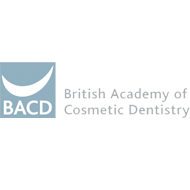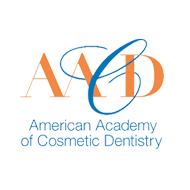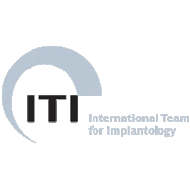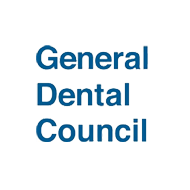Search the A-Z for the meaning of the word or simply to find out more about dental health.
There are currently 22 names in this directory beginning with the letter A.
Abrasion
Wearing away of a tooth. It may be caused by incorrect tooth brushing (The point where the tooth meets the gum is particularly vulnerable as the root may have become exposed). It can be made worse by the use of abrasive toothpaste (e.g. smokers). Any damage near the gum may be extremely sensitive and need treatment from a dentist. Sensodyne may be an effective remedy.
Abscess
An accumulation of pus which is formed at the root of a tooth. The tooth will be very tender and there will be an intense throbbing pain. An abscess in the area where the tooth meets the gum is known as a periodontal abscess.
Dental treatment will be needed to effect a cure, but some measures can be taken to ease the pain: Take 2 Solpadeine tablets and rinse your mouth with hot water into which you have dissolved a teaspoonful of salt. This will help soothe the pain and assist the healing process.
Accidents
Accidents that involve injury to the teeth affect all ages groups. However, children are more vulnerable (just over one third of all five year olds will have suffered an injury to their first [primary] teeth.) By 12 years of age, 20-30% of children will have suffered injuries to their teeth.
Immediate action in the event of some injuries, such as a knocked out tooth, gives a much better chance of a good recovery
Injuries to the teeth can include the fracture of a portion of the crown, of the tooth, or the root. The fracture can go through enamel only; through into the sensitive yellow tissue under the enamel [dentine] or into the pulp (nerve and blood vessels) in the middle of the tooth.
Injuries can also affect the tissues that hold the tooth in place (periodontal ligament), or the tooth can be loosened or knocked out of its socket completely.
Accreditation
The dental industry is undergoing dramatic change. Independent practices are facing new competition with the entry into the market place of a number of big companies such as Boots and DenCare. In response, some independent dental practices are seeking to highlight their particular skills by adopting recognised quality management systems such as Denplan Excel, Investors In People, The Charter Mark, and the ISO 9000 Standard. This is accreditation. As they provide a mechanism that proves that proper practice management controls are in place, the use of such quality management systems is a necessary requirement for a presence on www.dental365.com site.
Acrylic
A plastic, or synthetic resin, material derived from acrylic acid. It is used extensively in the manufacture of dentures and other dental appliances.
Adrenaline
A substance produced by the Adrenal Glands, which prepares the body for fight or flight. It increases blood pressure, the heart rate, and nervous activity. Local anaesthetics contain adrenaline in very small quantities. Some patients are sensitive to adrenaline and it can induce a very rapid heart rate and palpitations. Dentists should be informed of any allergies/sensitivities.
Aerodontalgia
Toothache experienced during high-altitude flying. It is caused by the expansion of gas within the pulp chamber of a tooth due to the reduction in atmospheric pressure. It is usually the sign of a dead or infected tooth that is in need of treatment.
Aesthetic Dentistry
The techniques used to improve the position, colour shape and symmetry of the teeth and jaws. Aesthetic dentistry techniques are used to improve the appearance, as well as the function, of the teeth and mouth. Orthodontic treatment is included under this classification.
Alveolus
The alveolus (or alveolar bone) is the bony part of the jaw, which supports the tooth and its supporting attachments.
Amalgam
A mixture of finely powdered silver, a small quantity of copper, and mercury which forms a plastic material used to fill a tooth. Once tightly packed into the prepared tooth, the material is then carved into the required shape. It will set within a matter of hours to form an extremely durable, and long lasting filling. This is often referred to as a "silver amalgam filling".
Anaesthetic
A substance that is used either to 'numb' specific areas applied by injection (local), applied by cream (topical) or, to cause unconsciousness applied by injection or gas (general).
Analgesia
An absence of pain. An analgesic is a substance, which has the ability to dull or remove the sensation of pain (refer to Toothache also).
Anaphylactic shock
The sudden and dramatic collapse of the circulatory system as the result of an acute allergic response (e.g. from a bee or wasp sting). There may be a rapid drop in blood pressure that causes a loss of consciousness in which case emergency treatment is required. This consists of the administration of antihistamines or cortisones. The condition can prove fatal.
Anchylosis
A condition in which the tooth attachment disappears and the root becomes bonded to the jawbone making extraction of the tooth difficult or impossible. The condition is more likely to be associated with a dead or root treated tooth.
Anodontia
A rare genetic condition that causes the teeth to fail to develop. It can be either complete (a total absence of teeth) or partial anodontia [only one or two teeth may be missing] The most common site is the upper lateral incisors. The condition is hereditary.
Antibiotics
Drugs that can help clear up infections caused by bacteria, but not by viruses, worms or fungi.
Distinguishing illnesses which result from bacterial infections (as opposed to viral, worm or fungal infections) is the key to using them successfully.
Antiseptic
A chemical agent which can be applied to living tissues to destroy germs and prevent the spread of infection.
Apex
The tip (apical) area of the root of a tooth. If this part of the tooth has to be removed the surgical operation is called an apicectomy or root re-section. The apex is a very important part of the tooth. The blood and nerve supply, which keep the tooth alive, run through a small opening in it into the root canal.
Articulator
An instrument used to assist with setting models of teeth in the correct relationship. It is used whenever a complete set of dentures is made to ensure that the jaws are in the correct relationship.








